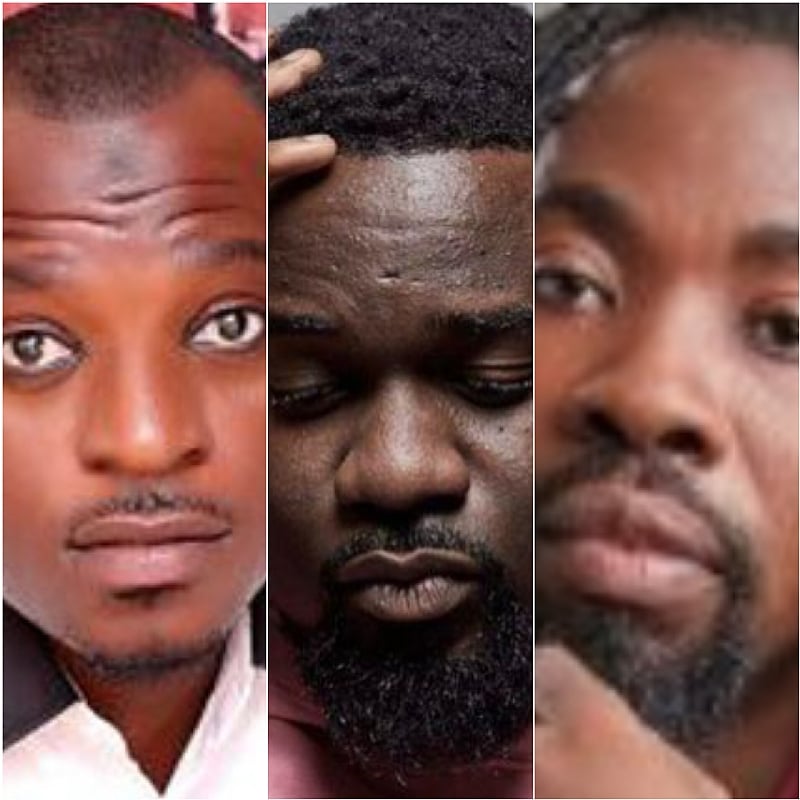This online controversy centers around a disagreement between Ghanaian sound engineer, Posigee, and veteran rapper, Obrafour, regarding the authorship of a song hook. Posigee’s initial social media post ignited the debate when he claimed Sarkodie, another prominent Ghanaian rapper, wrote a hook for a song owned by Obrafour. Obrafour immediately refuted this claim, sparking a public back-and-forth and drawing the attention of their respective fan bases. The ensuing online discourse unfolded on several platforms, with fans, music critics, and industry insiders offering their perspectives and interpretations of the situation. This incident highlights the complexities of artistic collaboration, intellectual property rights, and the sometimes blurry lines of creative contribution, all amplified and dissected within the public arena of social media. The core of the dispute rests on who contributed to the specific song element in question – the hook – a pivotal part of any song’s catchiness and memorability.
The disagreement underscores the importance of clear communication and documentation within collaborative artistic endeavors. While the details of the specific song and the nature of the collaboration remain somewhat ambiguous in the public discourse, the incident shines a light on the potential pitfalls of undocumented creative processes. Verbal agreements or informal collaborations, particularly in fast-paced creative environments, can easily lead to misunderstandings and differing recollections later. This incident seems to showcase such a scenario, where the involved parties hold conflicting memories of the creative process. Had there been formal written agreements or detailed records of the songwriting process, the current public dispute might have been avoided. This serves as a valuable lesson for artists and collaborators, emphasizing the need for clarity and documentation to prevent future conflicts and protect intellectual property.
The online reactions to the Posigee-Obrafour disagreement highlight the passionate engagement of music fans and the rapid spread of information (and misinformation) in the digital age. Social media platforms served as the primary battleground for this public dispute, with each artist’s fans rallying behind their respective idols. The speed and reach of social media amplified the controversy, drawing in numerous voices and perspectives, often fueled by speculation and conjecture. The online environment also allowed for the sharing of past interviews, social media posts, and other “evidence” intended to support one side or the other, further fueling the flames of the debate. The incident serves as a microcosm of the broader trend of online controversies, demonstrating how quickly narratives can be formed, disseminated, and contested in the digital public square.
Beyond the immediate dispute over authorship, the Posigee-Obrafour incident touches upon broader themes of artistic ownership and creative control. The question of who “owns” a creative work, especially one involving multiple contributors, can be complex. While legal frameworks exist for copyright and intellectual property, the creative process itself is often more fluid and less clearly delineated. The debate surrounding this particular song hook exposes the potential gray areas of creative collaboration, highlighting the need for clear attribution and recognition of individual contributions. The controversy also raises questions about the power dynamics within collaborative relationships, particularly between established artists and newer or less experienced collaborators.
This incident also offers a glimpse into the evolving dynamics of the music industry in the digital age. Traditional notions of authorship and creative control are being challenged by the increasing prevalence of collaborative songwriting and production. The ease with which musical ideas can be shared and modified digitally can blur the lines of individual contribution, further complicating questions of ownership and attribution. The Posigee-Obrafour dispute reflects these evolving challenges, underscoring the need for the music industry to adapt its practices and legal frameworks to better address the complexities of collaborative creation in the digital realm. The incident serves as a case study for how these issues can play out publicly and the potential consequences for artists’ reputations and careers.
In conclusion, the online controversy surrounding Posigee, Sarkodie, and Obrafour provides a valuable lens through which to examine several important issues within the music industry and the broader digital landscape. It highlights the importance of clear communication and documentation in collaborative projects, the power and pitfalls of social media in amplifying and disseminating disputes, and the evolving challenges of artistic ownership and creative control in the digital age. The incident serves as a reminder that creative collaborations, while often fruitful and enriching, can also give rise to conflicts when clarity and mutual respect are lacking. It is a cautionary tale for artists, producers, and industry professionals alike, emphasizing the need for proactive measures to avoid such disputes and ensure that all creative contributions are properly recognized and valued.


